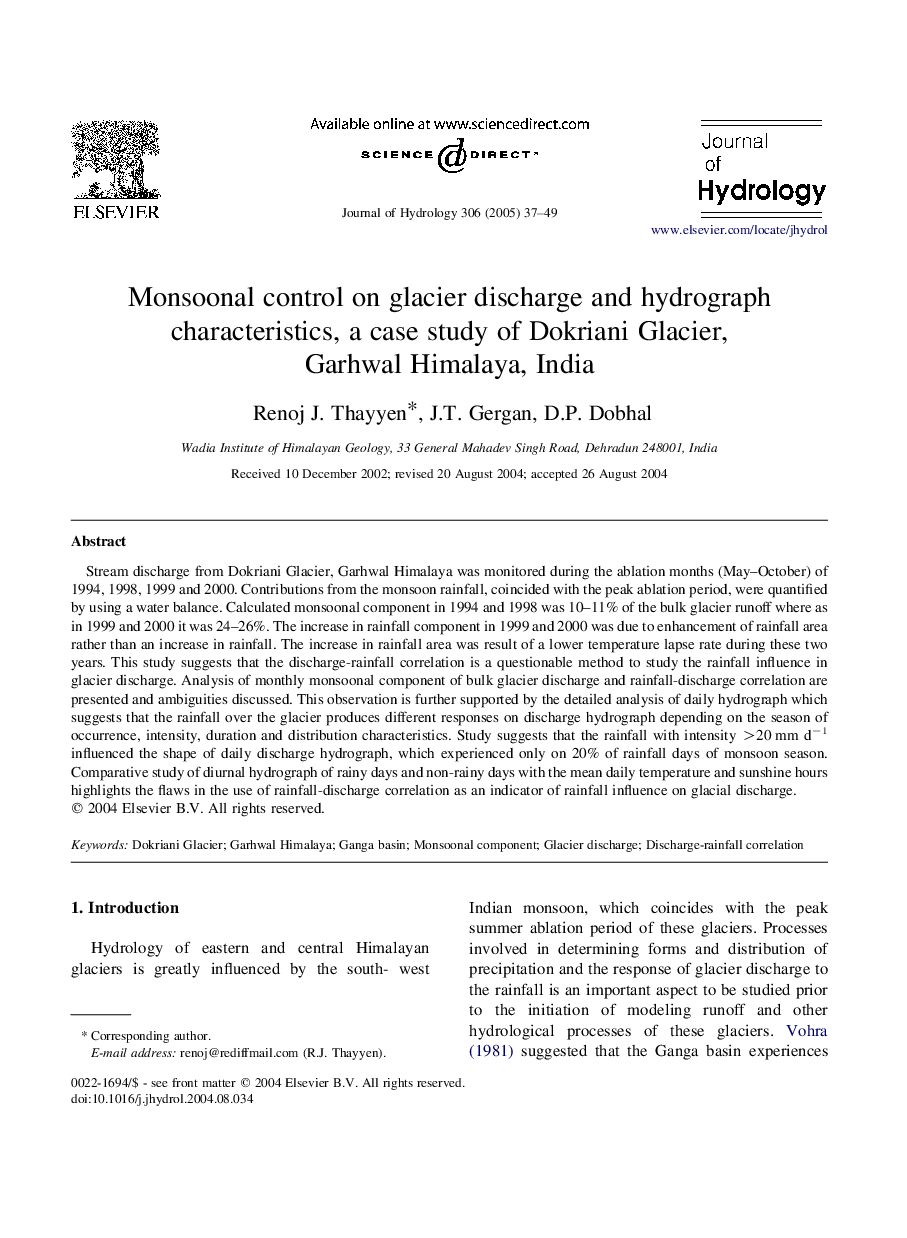| Article ID | Journal | Published Year | Pages | File Type |
|---|---|---|---|---|
| 9491407 | Journal of Hydrology | 2005 | 13 Pages |
Abstract
Stream discharge from Dokriani Glacier, Garhwal Himalaya was monitored during the ablation months (May-October) of 1994, 1998, 1999 and 2000. Contributions from the monsoon rainfall, coincided with the peak ablation period, were quantified by using a water balance. Calculated monsoonal component in 1994 and 1998 was 10-11% of the bulk glacier runoff where as in 1999 and 2000 it was 24-26%. The increase in rainfall component in 1999 and 2000 was due to enhancement of rainfall area rather than an increase in rainfall. The increase in rainfall area was result of a lower temperature lapse rate during these two years. This study suggests that the discharge-rainfall correlation is a questionable method to study the rainfall influence in glacier discharge. Analysis of monthly monsoonal component of bulk glacier discharge and rainfall-discharge correlation are presented and ambiguities discussed. This observation is further supported by the detailed analysis of daily hydrograph which suggests that the rainfall over the glacier produces different responses on discharge hydrograph depending on the season of occurrence, intensity, duration and distribution characteristics. Study suggests that the rainfall with intensity >20Â mm dâ1 influenced the shape of daily discharge hydrograph, which experienced only on 20% of rainfall days of monsoon season. Comparative study of diurnal hydrograph of rainy days and non-rainy days with the mean daily temperature and sunshine hours highlights the flaws in the use of rainfall-discharge correlation as an indicator of rainfall influence on glacial discharge.
Keywords
Related Topics
Physical Sciences and Engineering
Earth and Planetary Sciences
Earth-Surface Processes
Authors
Renoj J. Thayyen, J.T. Gergan, D.P. Dobhal,
